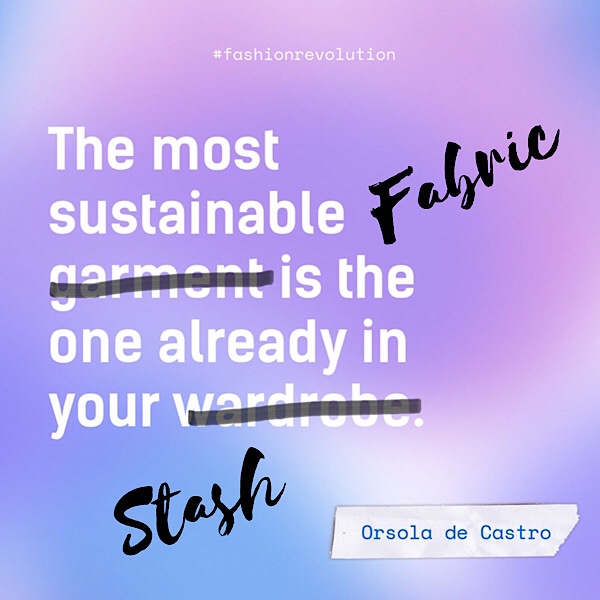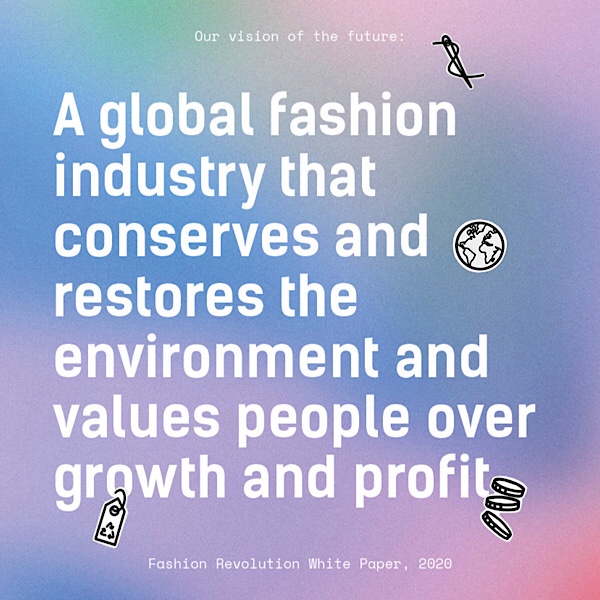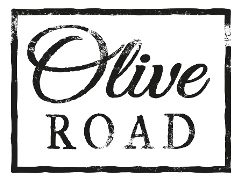
My Five takeaways from this inspiring week
This week I’ve been taking part in Fashion Revolution Week, to find out more about the processes that go into making my clothes and fabrics. Being in lockdown means I’ve been able to attend more events than ast year as they have all been online. It has been an inspiring week and I’ve learnt a great deal. Here are my five top learnings from this week:
1. What’s in my fabric?

‘Up to 95% of a garment’s impact lies in the materials choice alone’ (Amanda Johnston, The Sustainable Angle). I now understand this to mainly be chemicals: ‘Two thirds of our clothes contain 100% of chemicals. We are breathing, eating, drinking the fibres in our clothes, the majority of which are plastic and chemical.’ Peter Gorse of Golf Refugees, who believes fashion brands should use blockchain technology to trace every process in clothes and fully disclose all chemicals used. Read more information on chemicals from Peter’s interview at Ethical Brands for Fashion Revolution .
2. We wear mostly plastic
I knew that Polyester fibres were made from plastic but I didn’t know a wapping 60% of our clothes and textiles in the UK contain Polyester. This man-made fibre uses less water than a naturally grown fibre such as cotton but it has a damaging effect on the environment. Polyester starts off as petroleum oil followed by a huge number of chemical processes for it to become a fibre, yarn and fabric. When we wear and wash Polyester it’s microfibres end up in the atmosphere, rivers and oceans.

3. Natural doesn’t mean organic
Cotton is a good example of this. A naturally grown fibre, the cotton seed was genetically modified in the middle of the last century to provide a bigger yield with less pesticides. Yet the pests have evolved and more pesticides are used than before GM cotton seeds. It is a very thirsty crop. All of which adds up to it’s carbon footprint. Organic cotton has huge benefits for our environment, using less chemicals, less water and a offers better market price for the farmers that grow them.
4. Buying secondhand makes a difference
When so many of the Earth’s natural resources go into making textiles and so many harmful emissions come out of the process, it is reassuring to hear that buying secondhand has a dramatic effect on reducing their carbon footprint. Buying pre-loved and vintage fabrics means we are utilising textiles already in circulation. We are not depleting any more of the Earth’s resources to produce a new product. Plus, thousands of tonnes of textiles are thrown away every year. Re-using textiles and buying secondhand clothes means we are saving these items from landfill.
5. Consume less

‘If we consume less it automatically reduces the number of plastics and chemicals in our clothes.’ Baroness Bennet of Manor Castle, Green Party. I have a fabric stash as big as most sewists, I made a business out of mine! Before buying more fabric, consider what fabric we already have and what can it be made into. Make items that you’ll love and will wear many times. We all make mistakes with our sewing projects, what is in the UFO (unfinished objects) pile that needs altering or remodelled into something else? EBay is a great place to re-sell fabrics you no longer want for someone else to use.
Fashion Question Time took place on Friday. An opportunity for MPs and industry experts to debate the damaging actions of the fashion industry and lobbying for change. Co-Founder of Fashion Revolution, Orsola de Castro summed up the event:
‘This call for Fashion Question Time couldn’t be more simple: Mass consumption, the end of an era? Remove the question mark. Mass consumption, the end of an era – full stop.’
Orsola de Castro, Fashion Revolution

References: Events I have watched this week
The Sustainable Angle
Ethical Brands for Fashion Revolution
Fashion Question Time
